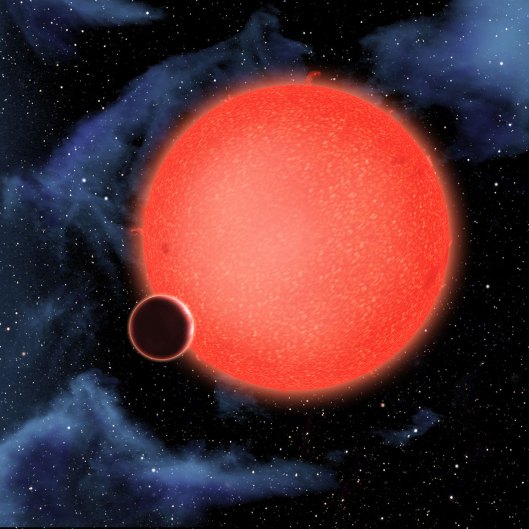Tags
ESO, exoplanet, Gliese 667 cc, Kepler, Kepler 22-b, KOI-727, Super Earth, Tatooine, triple star system, water world
We were definitely getting spoiled. It seemed like every other day we heard about a new planetary discovery. But then this past month, we’ve experienced somewhat of a drought.
Then some refreshing news: The discovery of a new system, KOI-727, and its two exoplanets (planets found outside of our Solar System). Oh thank goodness! We here at Space Oddities needed a planetary fix.
So far, 767 planetary discoveries have been made. Here are some we’ve reported on since we began Space Oddities less than a year ago. Enjoy!
The super-Earth Gliese 667 Cc

This artist’s impression shows a sunset seen from the super-Earth Gliese 667 Cc. The brightest star in the sky is the red dwarf Gliese 667 C, which is part of a triple star system. The other two more distant stars, Gliese 667 A and B appear in the sky also to the right. Astronomers have estimated that there are tens of billions of such rocky worlds orbiting faint red dwarf stars in the Milky Way alone. Caption and image courtesy of the ESO/L. Calçada
Gliese 667 Cc, which has a similar mass to our planet and thus called a super-Earth, is located in a triple star system in the constellation of Scorpius. Scientists have called it the Holy Grail of exoplanet research.
Read more about this super-Earth here.
Small and scorching
In December of 2011, NASA announced the discovery of two Earth-sized planets that reside in a pretty odd solar system. The planets are part of the Kepler 20 system, which also includes three larger planets. Above is an artist’s conception of Kepler-20e.
Read more about the planets here.
GJ1214b – the water world
This super-Earth – dubbed GJ1214b – is about 40 light-years away and is enshrouded by a thick, steamy atmosphere.
Read more about the water world here.
A pair of stars
Illustrated above, the Kepler-35 system consists of a Saturn-sized planet orbiting a pair of stars, according to NASA. The stars are much cooler than our Sun and the planet – Kepler 35b – orbits the suns every 131 days.
Read more about the Kepler-35 system here.
Small worlds
Here’s an artist’s conception of the KOI-961 system with three planets that all smaller than Earth. The smallest of the three planets, called KOI-961.03, is about the size of Mars and actually located the farthest from the star, according to NASA. It is pictured here in the foreground.
Read more about KOI-961 here.
More super-Earths
This artist’s impression shows a super-Earth orbiting the Sun-like star HD 85512 in the southern constellation of Vela. This planet is one of 16 super-Earths discovered by European Southern Observatory (ESO) using the HARPS instrument.
Read more about the huge discovery here.
The invisible world
The “invisible” world Kepler-19c is slightly more than twice the diameter of Earth and is probably a “mini-Neptune,” according to scientists from the Harvard-Smithsonian Center for Astrophysics. Nothing is known about Kepler-19c, other than that it exists.
Read more about the invisible world here.
Kepler 22-b

This artist’s conception illustrates Kepler-22b, a planet known to comfortably circle in the habitable zone of a sun-like star. Courtesy of NASA/Ames/JPL-Caltech
The planet, called Kepler 22-b, is a bit more than twice the size of Earth and 600 light years away. This would be Kepler’s first confirmed planet in the Goldilocks – or habitable – zone. This means that the planet is situated far enough away from the sun where it’s not too hot, or too cold. But some don’t agree.
Read more about the controversial Kepler 22-b here.
Star Wars in real life
NASA’s Kepler mission discovered a world where two suns set over the horizon, according to NASA. The planet, called Kepler-16b, is the most “Tatooine-like” planet ever found. If you didn’t know, Tatooine is the name of Luke Skywalker’s home in Star Wars.
Read more about Kepler-16b here.
The dark planet
According to the Center for Astrophysics, “The distant exoplanet TrES-2b, shown here in an artist’s conception, is darker than the blackest coal. This Jupiter-sized world reflects less than one percent of the light that falls on it, making it blacker than any planet or moon in our solar system. Astronomers aren’t sure what vapors in the planet’s superheated atmosphere cloak it so effectively.”
Read more about the dark planet here.
Want more exoplanet news? Click here to read about other planetary discoveries.








